 Here’s a write-up from Yukon, North of Ordinary for Alaska or Bust & Other Stories
Here’s a write-up from Yukon, North of Ordinary for Alaska or Bust & Other Stories
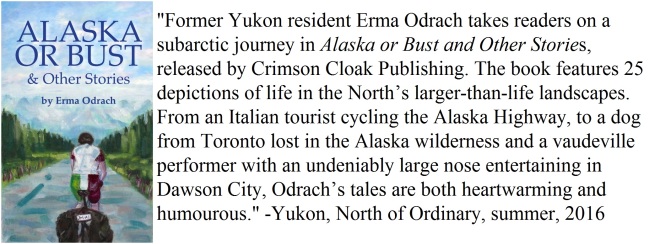
 Here’s a write-up from Yukon, North of Ordinary for Alaska or Bust & Other Stories
Here’s a write-up from Yukon, North of Ordinary for Alaska or Bust & Other Stories


Most authors, though they may be writing fiction, more often than not, base their content on places they’ve been, people they’ve met, and experiences they’ve had. Let’s briefly take a look at my book, Alaska or Bust and Other Stories. Though it is fiction and there’s even a disclaimer at the front of the book to prove it – any resemblance to actual persons or events, living or dead, is entirely coincidental – is this really true of any book? In my book, for example, I’ll admit almost all the pieces are drawn from real events and real people, some more than others. Where characters are concerned names have been changed to “protect the innocent”. And it doesn’t stop there – maybe the hair/eye color has become different, characters have gone from being tall to short, young to old, and personalities have undergone a revamping, all to make the identifiable unidentifiable. Though characters in fiction are for the most part ‘fictional’, at the core of almost each and every one there is to some degree a real person.
Back to Alaska or Bust. Let’s first take a look at the story “Luke’s Libido”. Is Luke truly a fictional character? Well, truth be told, there was this actual guy in Fairbanks with gossip surrounding his private life, that he had a high-running, out-of-control libido. He worked in one of the shops in town, and his libido apparently was so outstanding sales in the shop were skyrocketing. One day I popped in to see for myself what all the fuss was about. Though I never picked up on anything extraordinary, with the gossip continuing around him, and even hearing unbelievable first-hand accounts, I was inspired to write the story “Luke’s Libido”. But I changed his hair from blond to black, got him to drive a pick-up truck instead of a Volvo, and made his personality aloof, when in reality he was most approachable. If the real Luke were to read my story, do you think he would recognize himself? I think it just might ring a bell.
Excerpt: Suddenly it was as if his libido started talking to him. It said: “This is terrific! I pledge to fight on!”
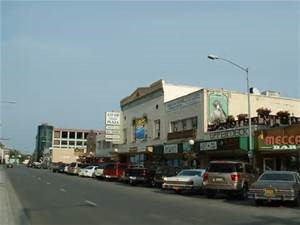
~~~
Now let’s take a look at “Portrait of a Draft Dodger”. JJ was a made up ‘initial’ name of a draft dodger living in the Yukon bush (his actual ‘initial’ name had different letters). I’m not really sure if JJ really was a draft dodger from the Viet Nam War, but he had a bushy gray beard and always wore a prospector’s hat he found in a junk store (that was true). One day he had his portrait painted by a local artist (not true – it was a photograph instead), and the portrait became so popular it landed on a postcard and his face became a symbol of the Yukon – rugged, wild, tough (that was true, and I even found a copy of the card online). And there’s more. One day when I was out in the bush, I spotted a strange woman in the trees – in heels and a flowered dress. When I got closer, I came not face to face with a woman but JJ in drag (that was true). His cabin was not too far away so he invited me in for tea and we chatted (that was true). Again, if JJ were to read the story, I do believe he would put two and two together.
Excerpt: JJ brooded, he even felt vexed. He cursed under his breath, “What an arrogant son-of-a-bitch. He doesn’t know a fake drag queen from a real one! He just wants to nab me.”
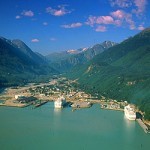
~~~
Lastly, now, let’s take a look at “Chuck Goes to Haines, Alaska on the Fourth of July.” Of all the stories this one is pretty much all non-fiction though it is part of a book of fiction. It’s about a mongrel I adopted from the Toronto pound and then took up to Alaska/Yukon with me. He was always up to no good – he stole sausages from the butcher in Whitehorse; he impregnated a husky three times his size in the middle of Main Street; he jumped out of the back of a pick-up truck and became lost in the wilds of Alaska. All the antics he pulled were true and I did no altering of his scraggy appearance or of his feisty personality. But with Chuck being a dog there was no need to protect his identity – no disguises needed there. Had he been human? Totally different story.
Excerpt: “…he walked and walked but he tried to forget how tired he was. He was in terrible pain and his legs were aching. Would he survive?”
~~~
So, does fiction really exist in its purest form, or is life always getting in the way? Would love to hear your thoughts!
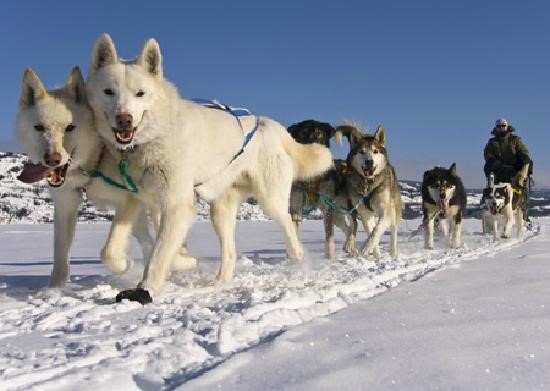
Here are a few top-selling novels based on actual people and/or events, some leading to legal battles of appropriation: The Cellist of Sarajevo, Steven Galloway; Intimacy, Hanif Kureishi; The Help, Kathryn Stockett.
 Welcome to Bank Street Blog. Bank Street is not just virtual but a real place in the heart of one of the biggest cities in North America – Toronto. It’s a small residential street, rather nondescript, with neatly trimmed lawns, spacious flowerbeds, and has about fifty houses on it. The houses are all eclectic, ranging from late Victorian, to Edwardian, to one built in the 1950s. There’s a small store on one corner selling last-minute items such as eggs, milk, junk food, cold cuts, and cheese (mostly of the Portuguese variety), and on the other a little park with a playground and a baseball field. The street runs east-west, and for cars it is one way going east. Here’s a pic of a few of the houses to give you an idea.
Welcome to Bank Street Blog. Bank Street is not just virtual but a real place in the heart of one of the biggest cities in North America – Toronto. It’s a small residential street, rather nondescript, with neatly trimmed lawns, spacious flowerbeds, and has about fifty houses on it. The houses are all eclectic, ranging from late Victorian, to Edwardian, to one built in the 1950s. There’s a small store on one corner selling last-minute items such as eggs, milk, junk food, cold cuts, and cheese (mostly of the Portuguese variety), and on the other a little park with a playground and a baseball field. The street runs east-west, and for cars it is one way going east. Here’s a pic of a few of the houses to give you an idea.
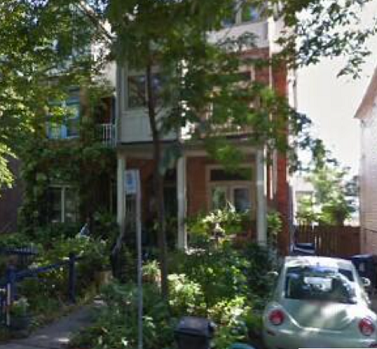
It’s easy to pass Bank Street by without even noticing it. There never seems to be much going on there, but, let me tell you, looks can be deceiving. If one were to take a closer look, one would see there’s a whole lot more than meets the eye. Over the years, people have moved in and people have moved out, and almost all of them were up to something, often in oddball ways. I’m not into categorizing neighborhoods but if I had to, I would say Bank Street was a street of immigrants, of the working class, of writers, of poets, and of artists, but today well on its way to gentrification.

Lemon Bucket Orkestra
Why did I call my blog Bank Street? Well, because I’m writing a book about Bank Street, about the houses, the gardens, and the people who live(d) there. Though they were ordinary, they were also extraordinary: a bootlegger, an armless painter, a peeper, the Lemon Bucket Orkestra and more! Allow me to introduce them to you, but I will do so one at a time. First meet Mamma Mia as she appears in the beginning of her own chapter of the same name.
Mamma Mia – excerpt:
A beautiful August sun was shining warmly over Bank Street. As Reginald made his way down the sidewalk he saw Mamma Mia sitting on her veranda peeling garlic. With her head bent over a bucket, she had already filled it half way. The pungent smell permeated the air and she was drenched in it. Later she would take the garlic, grind it up, put it in jars, and freeze it. Her cotton flowered blouse, half open, showed an ample bosom, and the zipper on her skirt was undone as if to give her breathing space. She was sweating profusely. Could it be she was pregnant – again?

Mamma Mia was a very fat woman, the fattest on the street, and it seemed she just got fatter all the time. She got pregnant a lot too but when she was pregnant no one could tell if she was really pregnant or just getting fatter again. When a baby appeared then everyone knew that she had indeed been pregnant. But pregnancies made her hungry and after each one (so far there were six of them) she gained more weight. She would eat everything in sight – chicken, spaghetti, scaloppini, tortellini, and she even went for deserts such as tiramisu, biscotti, ricotta cheesecake, and gelato… (to be continued).
Welcome to Bank Street – a place to meet, chat, and book talk.